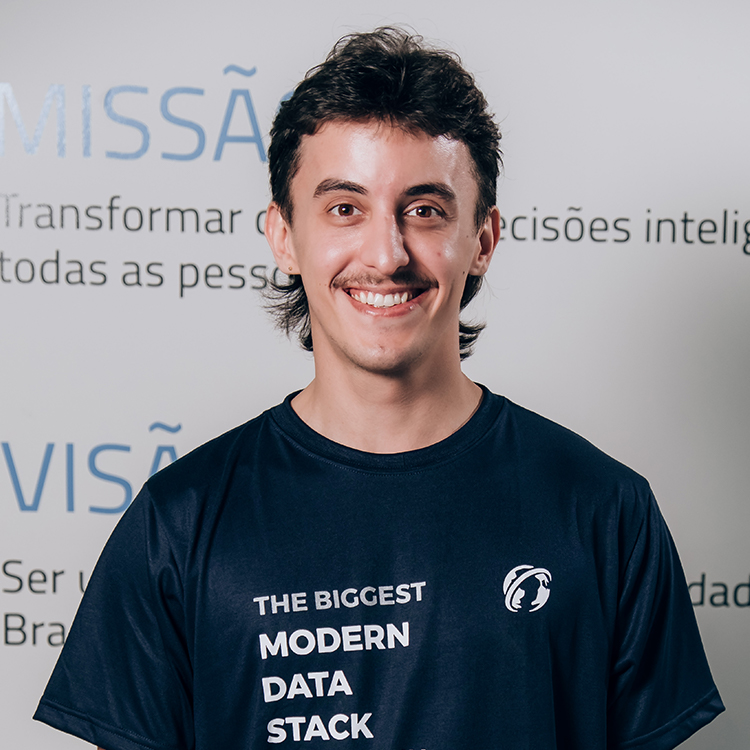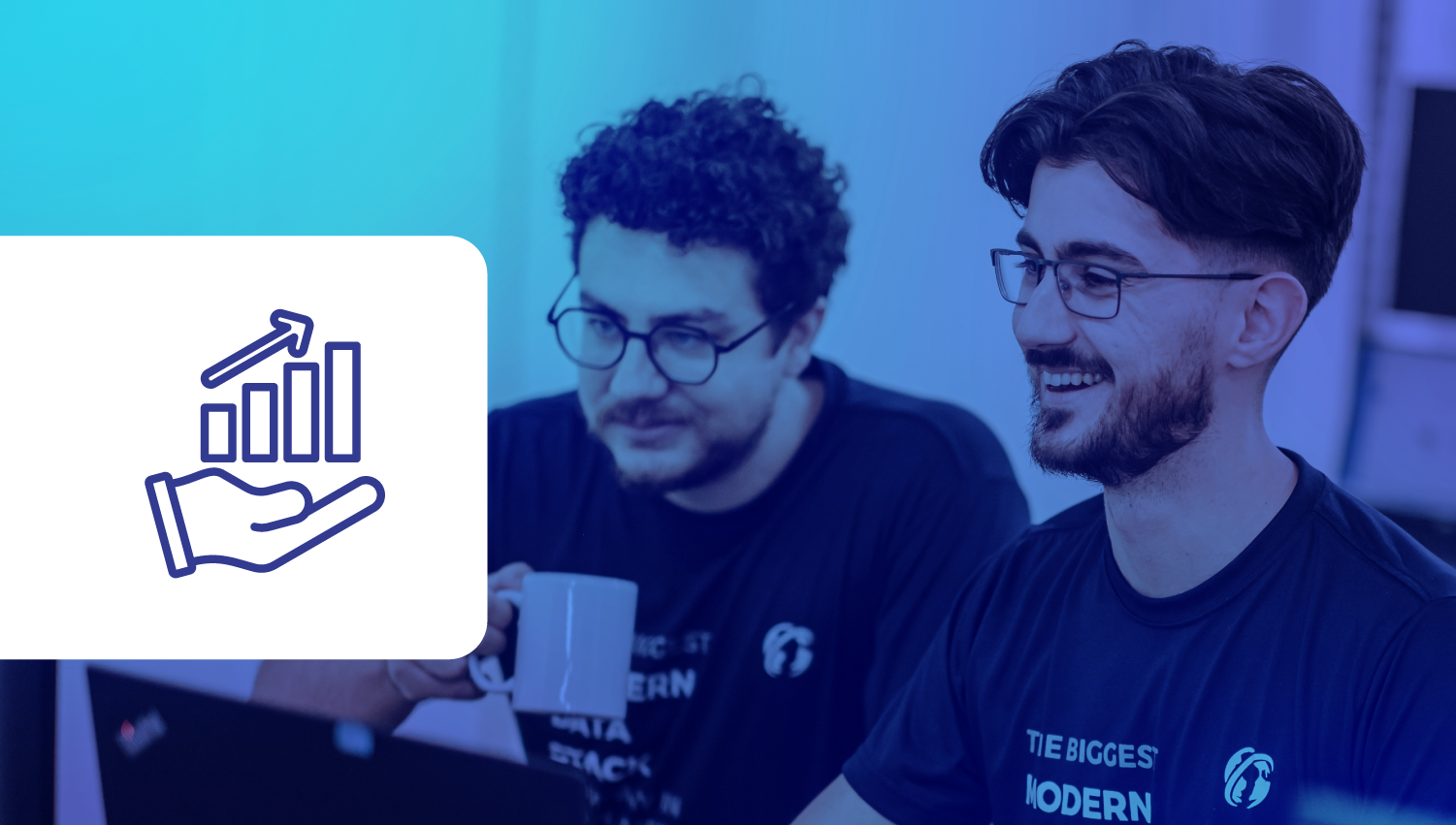
How can you use generative AI in your company?
With a diagnosis, defined use cases, a strategy and the necessary skills and resources, your company can use generative AI.
That's quite a challenge, and we understand.
But we also understand how to overcome this challenge: by building a solid data driven culture, you'll be able to use all the potential that generative AI can offer.
This requires a lot of work and, in this text, we present some very didactic reflections to help you on your journey of discovery on how to use generative AI in your company.
Keep reading.
Generative AI: power for your business
Okay, you've probably already received a barrage of information from communication channels about generative AI, GPT Chat, OpenIA, Bard etc.
And if you've ever tried GPT Chat, you may have been dazzled by the degree of assertiveness of the responses and the level of richness of detail and complexity when having a conversation with the artificial intelligence.
You've probably also come across a report, such as this one from McKinsey which states that:
"The application of generative artificial intelligence in multiple industries could generate between US$2.6 trillion and US$4.4 trillion in the global economy every year."
And because of all this, if you're a C-Level in a company, you've probably wondered how to use this potential.
On the other hand, if you're at management or operational level, at some point recently your boss has probably asked you the same question:
how to use the potential of generative AI?
Let's go in parts.
Defining the horizon of the game with artificial intelligence
Are there any innovations that arise spontaneously during the history of companies and work out very well?
Yes, but let's face it, any management book will tell you:
- set a goal;
- draw up a plan;
- monitor execution;
- and measure the results.
For generative AI, [unfortunately] it's no different.
That's why it's very important for you to think about how this new technology will fit into your company's overall strategy.
To help you understand this, there is the H1, H2 and H3 framework proposed by McKinsey.
This methodology, which basically consists of defining what horizon we want to play from, helps you define a strategic plan for using generative AI in your business.
Understand the horizons (H) of this game
Writing a text for a blogpost, we want to take advantage of the full potential of ChatGPT to help with this task, right?
In this article, for example, we use this prompt:
"I'm writing a blogpost about generative AI applications, please describe briefly and simply what the H1, H2 and H3 horizons are."
The answer [polished by us] is below:
H1 - Optimization of current business
The first horizon, H1, focuses on optimizing the company's current operations. Here, the focus is on the immediate present and maximizing results within the existing business model.
Strategies in H1 involve incremental improvements, process refinements, increasing operational efficiency and reducing costs. This horizon is fundamental to ensuring that the company is operating effectively and delivering high-quality products and services.
- Use
H1 is used to maintain current competitiveness, ensuring that the company is meeting customer demands efficiently and effectively. Efforts are focused on solid execution of the existing business model.
H2 - Expansion and growth
The second horizon, H2, broadens the focus to the medium term and looks for opportunities for growth and expansion. At this stage, the company seeks to explore new markets and customer segments that are not being served, and to expand its product or service offerings.
Strategies in H2 can involve developing new products, entering emerging markets and expanding geographically.
This horizon aims to increase the company's relevance in the market and create a solid foundation for future growth.
- Use
H2 is used to seek out new market opportunities and expand the company's presence. This is when areas that can generate sustainable and diversified growth are explored.
H3 - Transformation and radical innovation
The third horizon, H3, is designed for the long term and focuses on radical transformation and disruptive innovation. Here, the company seeks to fundamentally redefine its business model, explore new technologies and create new products or services that can revolutionize the market.
Strategies in H3 can involve investments in cutting-edge research and development, strategic acquisitions and the creation of products or solutions that change the rules of the game.
- Use
H3 is used to create the future of the company, exploring disruptive innovations that can change the way the company operates and positions itself in the market. Here, the vision is long-term and the rewards can be substantial, but the risk is also greater.
This multi-horizon approach to strategy allows companies to allocate resources and attention in a balanced way between immediate needs, sustainable growth and long-term innovation.
Realize that each horizon plays a vital role in driving the company's ongoing success, ensuring that it evolves and adapts in line with market demands and emerging opportunities.

Here at Indicium, for example, we're playing on the H1 and H2 horizons.
This means that we are both understanding and developing applications that seek to optimize our internal processes, and designing value propositions that can be sold to clients as a product in a market adjacent to our core business.
Once the horizon has been defined, it's time to understand whether your company is mature enough for this change
You need to understand whether your company is ready to adopt generative AI.
There's no point in having a defined strategy and wanting to skip steps, especially if your company doesn't have the analytical maturity to do so...

Here at Indicium, we believe that successful initiatives to increase analytical maturity are anchored in these three pillars:
- People
- Organization
- Data
And based on the analysis of these three pillars for your company, we can make a maturity diagnosis for the use of generative AI.
Do you want to understand the level of maturity of your business?
The time has come!
Access our Readiness Diagnosis for Generative AI use.
You'll answer a few questions relating to the three pillars (people, organization and data) and we'll provide an assessment of your company's readiness status. It takes less than 15 minutes.
With this, you will understand both the degree of maturity of your business and what key factors you need to work on to succeed with an artificial intelligence initiative.
It's a great start to find out if your company is ready to use the power of generative AI and start mapping out the possibilities.
Map usage opportunities for generative AI
We believe in culture and multidisciplinarity. This is no different in the use of AI.
Opportunities to use generative AI don't arise organically. You have to train, talk about it, set up specific working groups and committees.
And you need to use and abuse ChatGPT. This can provide insights for mapping specific cases for each area of your company.
Here's another example of a prompt:
"I work in the contracts sector of a textile industry, how can I apply generative AI?"
You can read the answer [polished by us] below:
The application of generative AI in the contracts sector of a textile industry can bring efficiency, personalization and automation to contractual processes.
Here are some ways to apply generative AI:
Horizon H1 - Optimization of current business
Automated generation of standard contracts: use generative AI to create customized standard contracts, adapted to the specific needs of each client or transaction, reducing the time needed to create repetitive documents.
Automatic contract review: apply generative AI to analyze contracts for errors, inconsistencies or non-compliant clauses, ensuring greater precision and quality.
Tracking changes: use generative AI to track changes to contracts, making it easier to identify and understand changes made throughout the negotiation process.
Horizon H2 - Expansion and growth
Customization of contracts: exploit generative AI to customize contracts according to the specific needs of different clients, adapting clauses, terms and conditions according to specifications.
Automatic contract translation: use generative AI to automatically translate contracts into different languages, allowing you to expand into international markets without language barriers.
Horizon H3 - Transformation and radical innovation
Smart contracts: consider creating smart contracts using blockchain technology, where generative AI can help codify complex clauses and automate contract executions.
Risk analysis in contracts: generative AI can be used to analyze contracts for potential risks, identifying ambiguous clauses or terms that could cause future problems.
Virtual assistance for negotiations: develop virtual assistants that use generative AI to help negotiate contracts, suggesting terms and clauses based on historical data and regulations.
By applying generative AI in the textile industry's contract sector, you can improve the efficiency, accuracy and personalization of contract processes, allowing your team to focus on higher value-added tasks and ensuring that contracts are aligned with the needs of the company and its customers.
Understand the generative AI solution
In order to develop generative AI solutions, it is necessary to understand the nature of certain criteria.
1) Regarding the use of internal data
Does the mapped solution need internal data to work?
For example, if the use case is to create creative marketing campaigns, the solution may not need a massive data ingestion structure; but if it is a machine maintenance assistant that answers specific questions from machine manuals, it will be necessary to create a structure that can integrate the data from these manuals.
2) The format of interaction
How will the person interact with the generative AI solution?
Who will use it: internal collaborator; partner; client?
Will the user interact via chat? Or via the interface?
For example, in a social network sentiment analysis solution, generative AI can be applied in an automated way via API to make results available in a data warehouse.
3) Data sensitivity
Is the data to be passed on to the generative AI solution sensitive?
For example, data from marketing creatives is less sensitive than personal data from bank customers, and this directly influences the design of the solution.
4) Error tolerance
We know that generative AI solutions can "hallucinate". How critical is this in the context of the operation?
For example, generative AI solutions are being used to diagnose image exams; in these cases, it is clear that the answers provided must be analyzed with extreme caution by the users.
In house x Shelf x Partnerships
Once you understand the solution, you need to understand how to get there. Here are three ways:
1- in-house development:
consists of developing the entire solution, end-to-end, with in-house resources.
2- off-the-shelf:
consists of hiring a ready-made market tool.
3- partnerships:
consists of hiring partner companies or people to develop the solution.
As you can see, there is no right answer to the decision. There are criteria that can be analyzed to help make the decision.

Did you notice the asterisks (*)?
This is to explain a feature of Indicium: we train clients and pass on all our knowledge so that they understand the solution from end to end, minimizing our lock-in.
Map out the skills and resources needed
After defining the strategy, carrying out readiness diagnostics, identifying use cases and understanding the solutions, it's time to understand what skills and resources are needed to develop a generative AI solution.
Of course, each solution is unique and so is the combination of skills and resources, but for a robust solution, generally speaking, bear in mind that you will need:
- resources
odatamanagement
data storage
code storage
computing
the LLM
the availability interface
integration
- professionals:
the business analyst
o data engineer
the data scientist
Finally, get to work!
With a robust game plan, it's time to get down to business.
At Indicium, we strongly believe in treating data development as data product development.
That's why it's important to have the user at the center of the entire journey and to have periodic interactions with them to understand whether the solution being developed is generating the value it's intended to.
And working like this has revolutionized the way we generate value, but that's a topic for another article...
Implement generative AI with Indicium
With a diagnosis, defined use cases, a strategy and the necessary skills and resources, your company can use generative AI.
We've also asked ourselves how we could apply generative artificial intelligence to Indicium and its clients.
Today, we have developed solutions that are actually generating more productivity, especially in Brazil and in New York.
Achieve better results with generative AI by implementing a modern approach to data in your business first. Click here to talk about it.
Follow Indicium e subscribe here to receive news from us.
See you!

David Eller
Group Data Product Manager

Bianca Santos
Redatora




